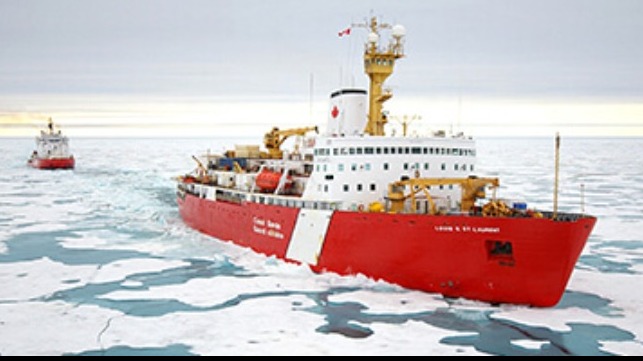Report: Shipbuilding Cost for Canada’s Icebreakers Skyrockets to C$7B

Costs for Canada’s long-delayed plan to build new, large icebreakers have reportedly skyrocketed according to a new report from Canada’s Parliamentary Budget Officer. The report suggested that costs have risen by seven times as the government went from one to two large icebreakers and that the price remains sensitive to further delays and cost overruns. The new icebreakers appear headed into a political sea more difficult than any ice they might encounter.
Canada’s federal government first announced plans in 2008 to build a new icebreaker costing C$700 million to replace the largest vessel in the Canadian Coast Guard’s fleet, the CCGS Louis S. St-Laurent, which entered service in 1969. The 11,345 gross ton vessel would have been replaced by the modern vessel, but the project encountered delays. By 2013, costs had risen to C$1.3 billion. The government withdrew the contract for the construction in 2019 as the selected shipyard encountered problems delivering on other government contracts.
“We estimate the total cost of the icebreaker project at C$7.25 billion, inclusive of project management costs of C$346 million, design costs of C$820 million, and acquisition costs of C$6.1 billion,” said Yves Giroux of the PBO in a report released on December 16. The federal government is yet to release its estimate for the cost of the vessels.
The cost increase includes the doubling of the project to two large vessels, which the federal government first announced in May 2021. The new plan also called for one of the vessels to be built on the Pacific coast and the other on the Atlantic. The PBO report estimates that splitting the contact to two or three shipyards would result in a loss of economies of scale and experience learned in the project. They estimate the added cost at between C$600 and C$800 million by splitting the construction and also highlighted a “significant premium,” because of the government mandate to build the ships domestically.
Based on the recent experience of the Government of Canada’s shipbuilding procurement initiatives to date, as well as competing priorities at the partner shipyards, the PBO reports that it assumes that construction activities for the first of the two ships will begin within the 2023-2024 fiscal year, with the second beginning in the following fiscal year. Deliveries of these vessels are anticipated for 2029-2030 and 2030-2031, respectively.
Timing for the first of the two vessels is considered critical as the older vessel is currently slated to retire in 2030. Delays in the effort to build the new icebreaker and renew other parts of the existing fleet have already strained the Canadian Coast Guard. Reports indicate that warming ocean temperatures have created a greater need for icebreakers. The Canadian Coast Guard recently purchased existing vessels in the secondhand market, including recently a commercial light icebreaker to help address the need for capabilities.
The PBO in its report warns, “A sensitivity analysis suggests that delays of either one or two years in the start of the construction for both vessels at each partner shipyard would increase total project costs by C$235 million or C$472 million, respectively.”
The announcement in the spring that the federal government planned to double the order was met with calls that it was politically driven, especially with the splitting of the order. Political critics are expected to highlight the dramatic cost increase and cost to taxpayers over the government’s inability to complete the project as another example of excessive spending.
